Indonesia, a sprawling archipelago in Southeast Asia, is a land of extraordinary diversity, boasting a rich tapestry of natural wonders and cultural treasures. From ancient temples that tell tales of dynasties past to breathtaking landscapes forged by nature’s hand, Indonesia’s landmarks beckon travelers to explore their historical, cultural, and natural splendors.
In this article, we’ll embark on a journey through Indonesia’s famous landmarks, unveiling their historical and cultural significance, offering practical tips for travelers, and sharing intriguing facts that make each site truly unique.
1. Borobudur Temple
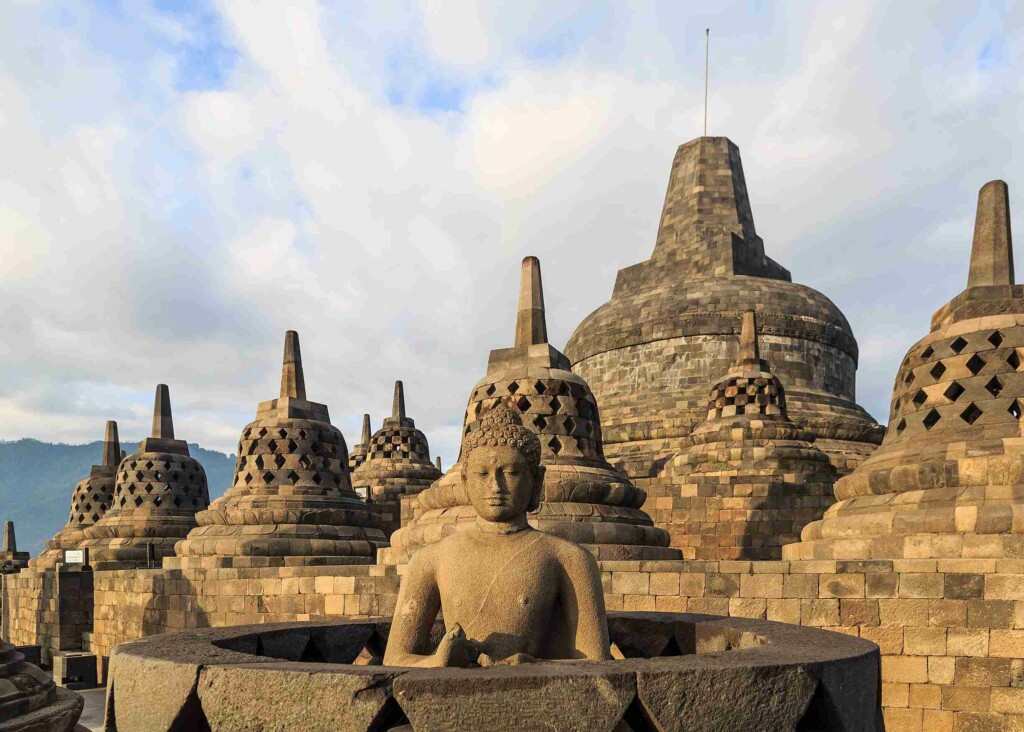
Borobudur is a majestic Buddhist temple located in Central Java, adorned with intricate carvings and stupas.
- Historical and Cultural Significance: Built in the 9th century, it is a symbol of Indonesia’s Buddhist heritage and a UNESCO World Heritage Site.
- Tips for Visiting: Sunrise visits offer a magical experience. Explore the levels, each representing a stage of spiritual enlightenment.
- Fun Fact: Borobudur was buried under volcanic ash for centuries before its rediscovery in the 19th century.
2. Prambanan Temple
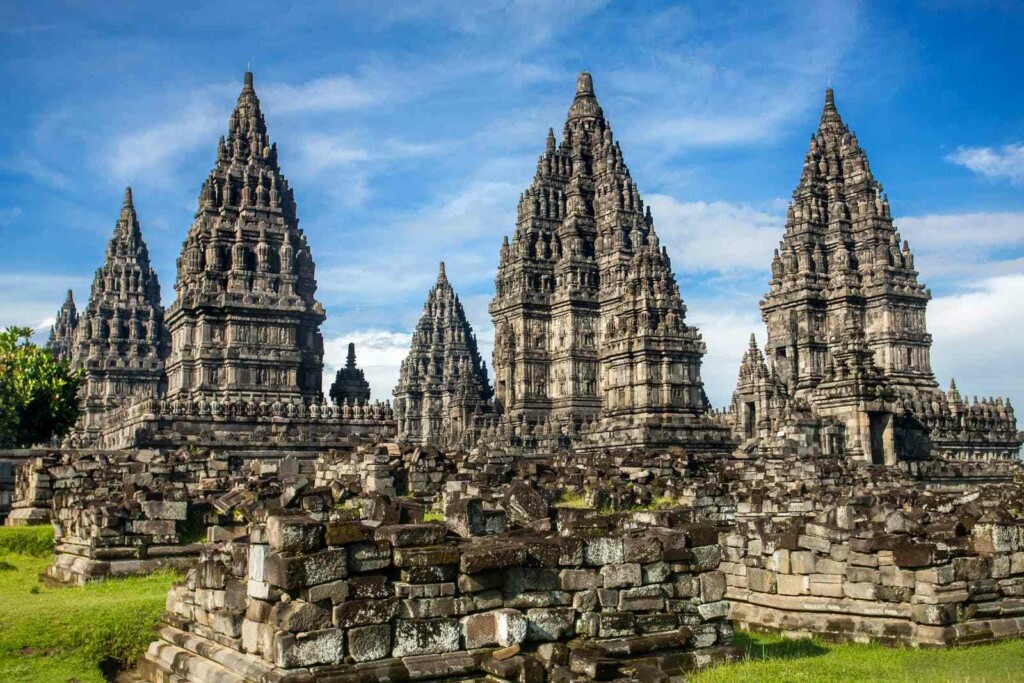
Prambanan, situated near Yogyakarta, is an awe-inspiring Hindu temple complex with towering spires.
- Historical and Cultural Significance: It honors the Trimurti, the Hindu trinity of Brahma, Vishnu, and Shiva, and is another UNESCO gem.
- Tips for Visiting: Visit during sunset for stunning views. Don’t miss the Ramayana ballet performances in the open-air theater.
- Fun Fact: Prambanan suffered damage in a major earthquake in 2006 but has since undergone extensive restoration.
3. Mount Bromo
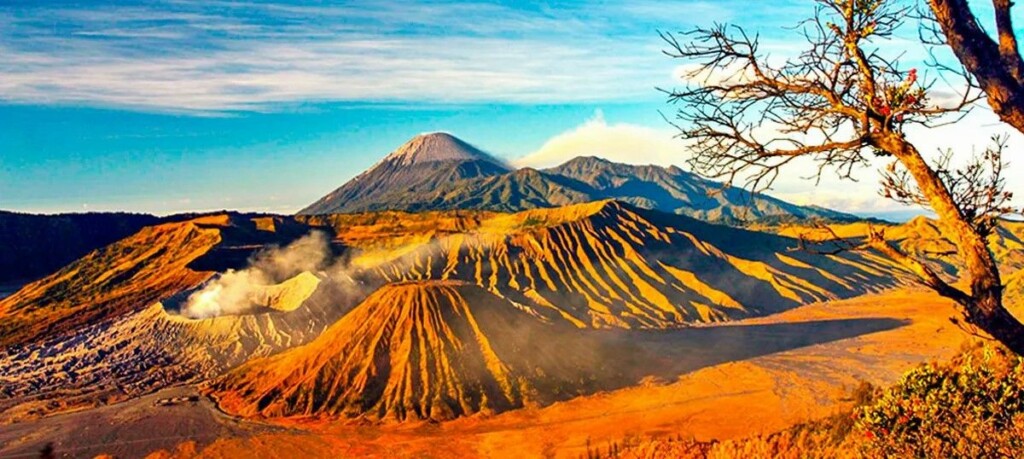
Mount Bromo is an active volcano in East Java, known for its dramatic landscapes and a caldera filled with volcanic ash.
- Historical and Cultural Significance: Mount Bromo is a sacred site for the Tenggerese people, who hold an annual Yadnya Kasada ritual here.
- Tips for Visiting: Witness sunrise from Penanjakan Viewpoint and explore the ethereal Sea of Sand before ascending to Bromo’s crater.
- Fun Fact: Mount Bromo is part of the Tengger Massif, which includes several volcanic peaks.
4. Raja Ampat Islands
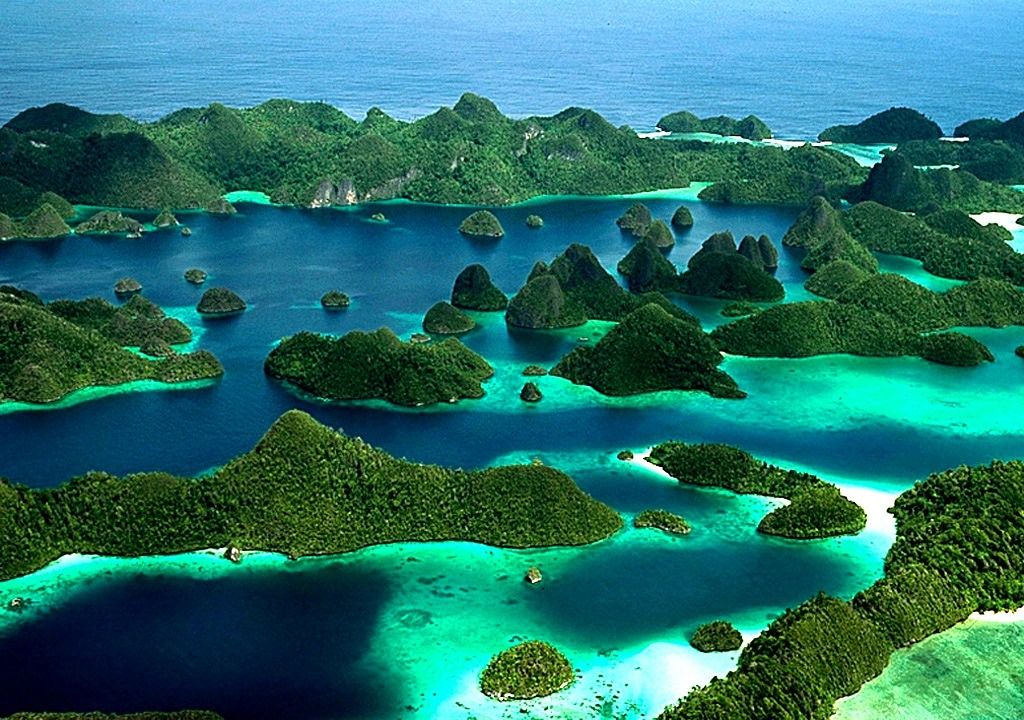
Raja Ampat, located in West Papua, is an archipelago renowned for its stunning coral reefs and biodiversity.
- Historical and Cultural Significance: The islands are home to diverse indigenous communities with unique traditions and languages.
- Tips for Visiting: Snorkel or dive to witness vibrant marine life, and respect the local customs and environment.
- Fun Fact: Raja Ampat is often referred to as the “Amazon of the Seas” due to its unparalleled marine biodiversity.
5. Komodo National Park

This UNESCO-listed park, encompassing several islands, is famous for the Komodo dragon, the world’s largest lizard.
- Historical and Cultural Significance: The dragons are of great cultural significance, and the park protects their habitat.
- Tips for Visiting: Guided tours are essential for safety. Marvel at the dragons, and explore the park’s pristine beaches.
- Fun Fact: Komodo dragons are known for their unique hunting technique, using venomous saliva to weaken their prey.
6. Ubud
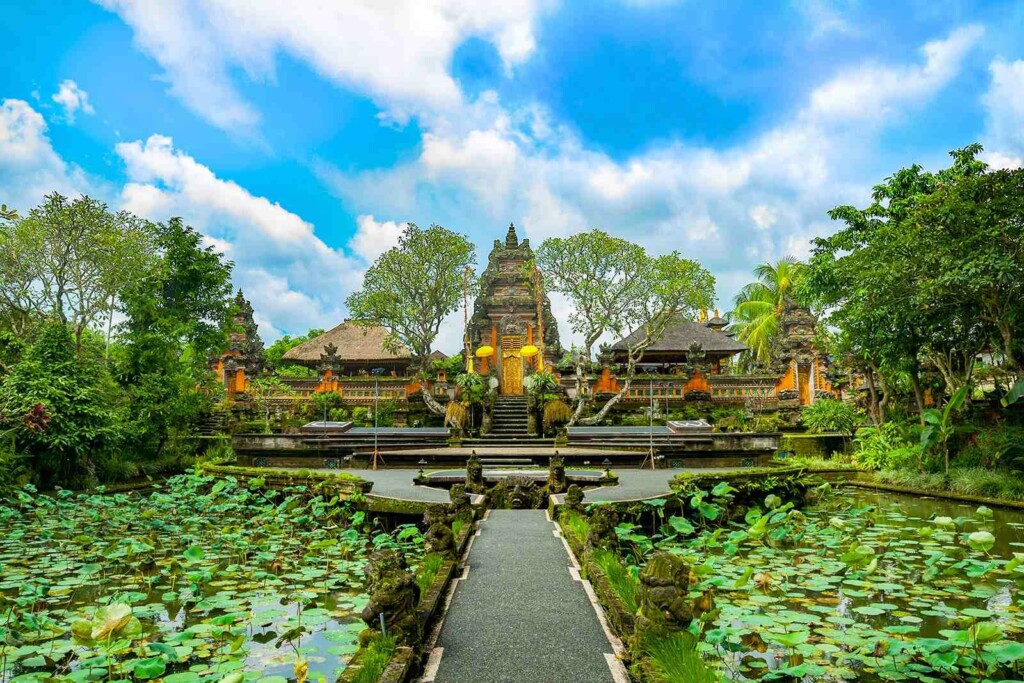
Ubud, located in Bali’s uplands, is a cultural heartland known for its art, dance, and tranquil surroundings.
- Historical and Cultural Significance: Ubud is a hub for Balinese arts and crafts, and its lush landscapes have inspired artists for generations.
- Tips for Visiting: Attend traditional dance performances, explore art markets, and visit the Monkey Forest Sanctuary.
- Fun Fact: Ubud gained international fame as the setting for the movie “Eat Pray Love.”
7. Tanah Lot Temple
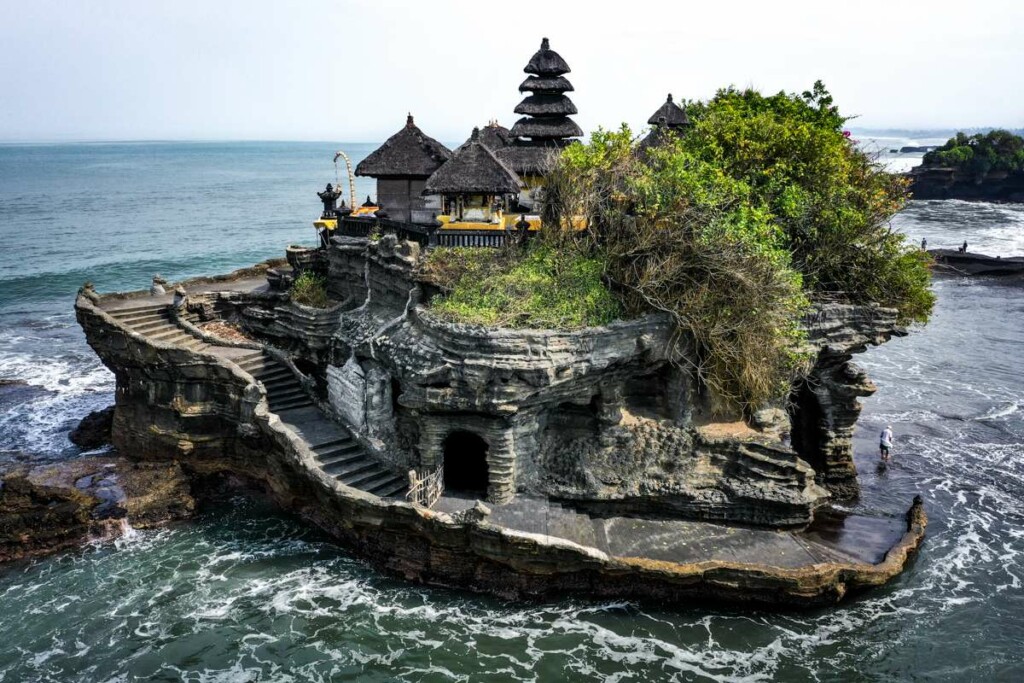
Tanah Lot is an iconic sea temple perched on a rock formation off Bali’s coast.
- Historical and Cultural Significance: It is a pilgrimage site dedicated to the sea gods, and its stunning location adds to its allure.
- Tips for Visiting: Sunset views are breathtaking, but be prepared for crowds. Respect the temple’s sacred status.
- Fun Fact: Tanah Lot is one of Bali’s seven sea temples, each visible from the next.
8. Uluwatu Temple
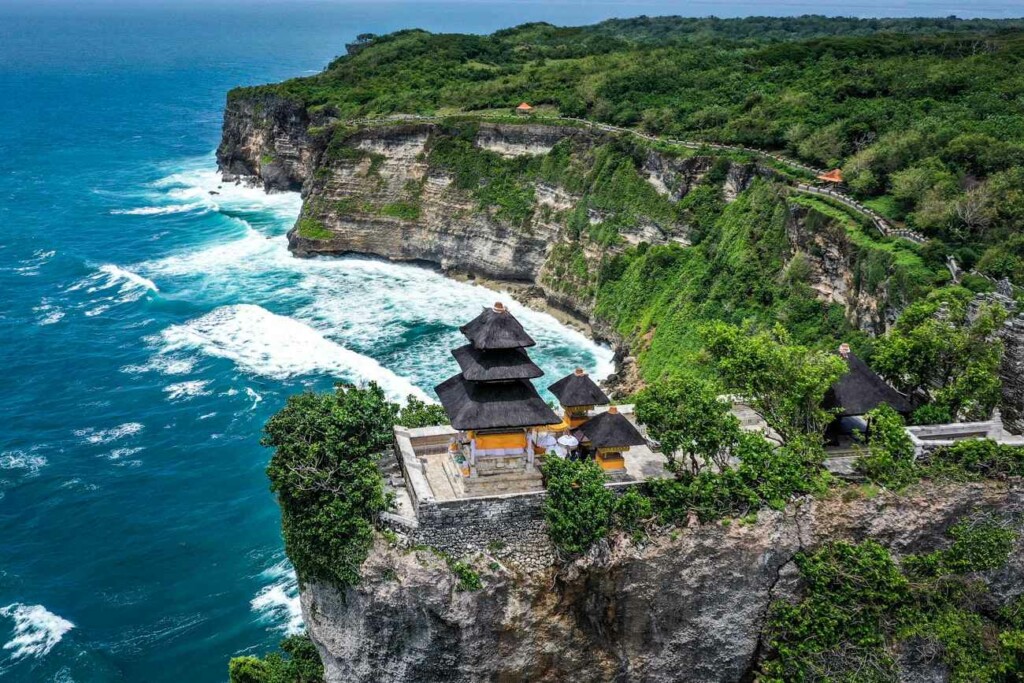
Uluwatu Temple, perched on cliffs in Bali, offers dramatic views of the Indian Ocean.
- Historical and Cultural Significance: It’s a key sea temple, guarding Bali from evil spirits. The Kecak dance is performed here.
- Tips for Visiting: Visit during the late afternoon and stay for the sunset dance performance.
- Fun Fact: The temple’s location is also a renowned surfing spot, attracting wave riders from around the world.
9. Tegalalang Rice Terraces

Tegalalang, near Ubud, features stunning stepped rice terraces etched into the lush landscape.
- Historical and Cultural Significance: These terraces are a testament to traditional Balinese rice cultivation techniques.
- Tips for Visiting: Wander the terraces, interact with farmers, and support local businesses.
- Fun Fact: The subak system, managing water and rice cultivation, was designated a UNESCO Cultural Landscape.
10. Ijen Crater
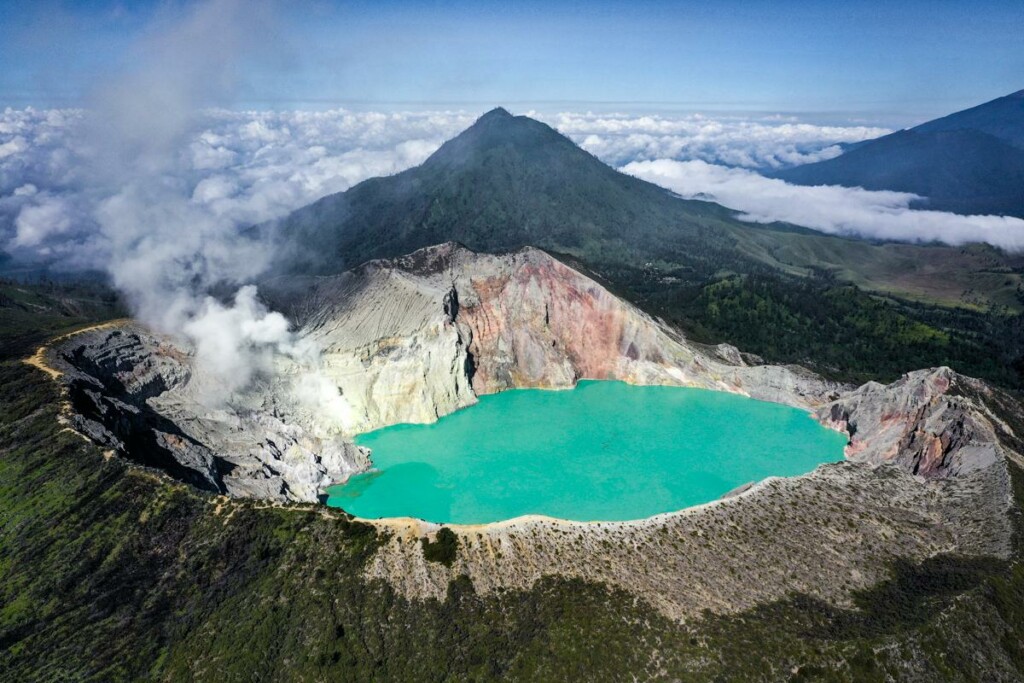
Ijen Crater, in East Java, is known for its turquoise acidic crater lake and sulfur mining operations.
- Historical and Cultural Significance: Sulfur miners extract minerals using primitive tools in arduous conditions.
- Tips for Visiting: Hike to the crater for sunrise views but wear appropriate gear and heed safety guidelines.
- Fun Fact: The blue flames, caused by sulfuric gas igniting, are a unique and eerie spectacle.
Indonesia’s famous landmarks beckon travelers with a tapestry of historical, cultural, and natural wonders. From the spiritual splendor of Borobudur and Prambanan to the enchanting marine life of Raja Ampat and Komodo, each landmark offers a unique glimpse into Indonesia’s multifaceted identity.
Whether you seek spiritual enlightenment, natural beauty, or cultural immersion, Indonesia’s treasures await exploration.





Companies That Support Israel: A List to Avoid
Does Red Bull Support Israel? Decoding the Unraveled Connection
Boycott List: Fashion Companies Supporting Israel You Should Be Aware Of
The 15 Biggest Woolworths Supermarkets in Sydney
Does These Firearms Support Israel? Exploring the Unraveled Connection
Does These Tech Brands Support Israel? Decoding the Unraveled Connection
Does These Filmography Support Israel? Understanding the Intricate Ties
Does These Online Business Support Israel? Exploring the Unraveled Connection